Some Windows users reported that they couldn't create a recovery drive on a USB flash drive or a local drive. If you get this error message, "We can't create a recovery drive. A problem occurred while creating the recovery drive", it means that creating windows 10/8/7 recovery drive failed.
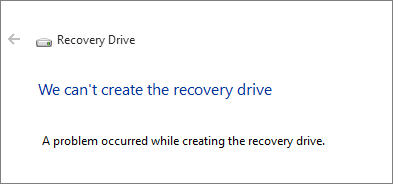
Don't worry. Here, we have found practical solutions to help you out. Check out why and find fixes for "can't create the recovery drive" now:
| Workable Solutions | Step-by-step Troubleshooting |
|---|---|
| Fix 1. Prepare another USB flash drive | Unplug the old USB drive and plug the new big...Full steps |
| Fix 2. Disable antivirus software | Open antivirus software on your computer and...Full steps |
| Fix 3. Repair system files corruption | Press Windows + X, and click...Full steps |
| Fix 4. Check and format the USB drive | Enter This PC, right-click your USB drive...Full steps |
| Fix 5. Run DISM tool | Press Win Key + X, click Command Prompt...Full steps |
| Fix 6. Create in another way | Back up Windows OS and then restore...Full steps |
Applies to: Fix the recovery drive creation gets stuck, fails, and sends the error message "We cannot create a recovery drive".
Why Can't I Create a Recovery Drive
Windows recovery drive, basically is a DVD or USB drive with copied Windows OS, which is widely used to access a failed Windows system and restore the failed or crashed Windows 10/8/7 immediately.
If you get the "we can't create a recovery drive" error, it could be the listed reasons below that block you from success:
- The option 'back up system files to the recovery drive' requires at least a 16GB USB flash drive.
- Antivirus blocks you from creating the recovery drive.
- The USB flash drive is corrupted or the Windows file system has corrupted.
- Windows cannot format everything on the drive to create a recovery drive.
- When the winre.wim file gets lost or deleted, you will also see the error message.
- Can't create windows 10 recovery drive some required files are missing.
You may also be intrested in
How to Fix We Can't Create Recovery Drive on Windows 10
So how to fix the "We can't create a recovery drive" error on your computer? Based on the above-listed causes, we've found 6 practical solutions for you:
- #Solution 1. Prepare another USB flash drive
- #Solution 2. Disable Antivirus software
- #Solution 3. Check & repair system files corruption
- #Solution 4. Check and format the USB drive
- #Solution 5. Run DISM tool
- #Solution 6. Create a USB recovery drive in another way
Solution 1. Prepare Another Big USB Flash Drive
Basically, creating a recovery drive with Windows system files requires you have a big USB drive. As for Windows 10 64bit, the drive should be at least 16GB in capacity.
Note: We would suggest you use a 32GB or even bigger USB for creating the recovery drive in Windows 10/8/7.
Step 1. Unplug the old USB drive and plug the new big one into PC.
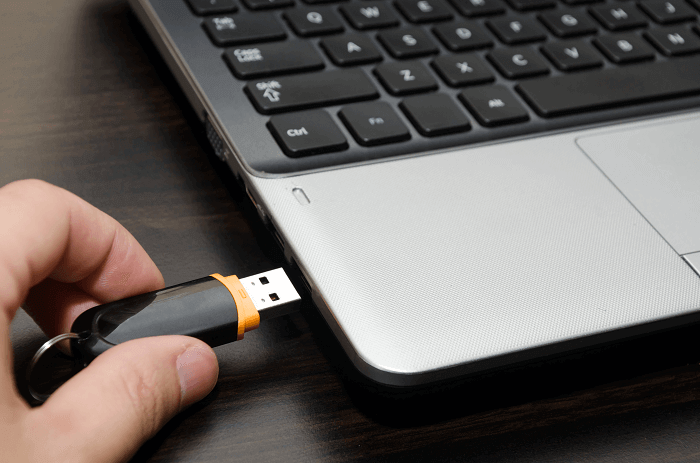
Step 2. Start to recreate a recovery drive to your USB drive in the same way.
For a step-by-step guide, click and follow this link for help: Windows 10 recovery USB Drive.
You May Also Interest:
Create Windows 10 Repair Disk from Another Computer
Some users also want to ask 'Can I use a recovery disk on a different computer in Windows 10?' Click and get the answer here.

Solution 2. Disable Antivirus software
Sometimes the antivirus software on your computer may block certain operations. Temporarily disable your antivirus software and try to create a recovery drive once again to see if it helps.
Step 1. Open antivirus software on your computer and disable them.

Step 2. Open Windows Defender, disable to antivirus feature.
Note: If you have successfully created a recovery drive after closing the antivirus software, you should re-enable it as soon as you're done.
Solution 3. Check & Repair Corrupted System Files
Corrupted system files will block Windows from accessing your external USB drive.
Try to run a System File Checker (SFC) scan to check for any file corruption. SFC scan will scan for corrupt system files on the computer and repair them.
Step 1. Press "Windows + X", click "Command Prompt (Admin)".
Step 2. In the Command Prompt, type the command sfc /scannow and then press "Enter".

Solution 4. Check and Format USB Drive
To make sure that the USB is available for creating the recovery drive, it's necessary to check its health state and format the flash drive with below steps:
Step 1. Back up all of your USB drive content, connect the USB drive to the computer.
Step 2. Enter "This PC", right-click your USB drive, and choose "Format".
Step 3. Click "File System" and use the drop-down arrow to select FAT32 for the drives.
Step 4. Tick "Quick Format" and click "Start".
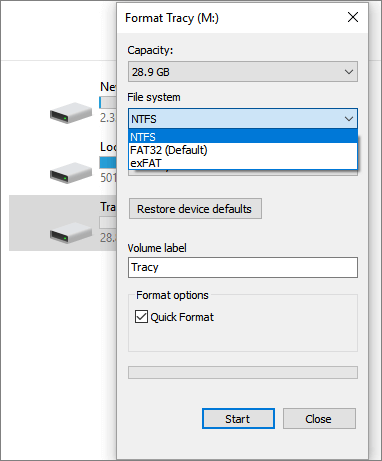
You May Also Like:
How to Format 128GB USB to FAT32
Sometimes, your USB is too big (32GB or bigger) that you can't format it using File Explorer or Disk Management. Click and get help here.
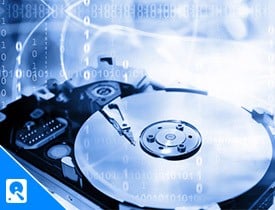
Solution 5. Run DISM Tool
DISM tool stands for Deployment Image Servicing and Management. You can run this tool through CMD and try again.
Step 1. Press Win Key + X, click Command Prompt (Admin).
Step 2. Type dism.exe /online /cleanup-image /scanhealth and then press Enter.
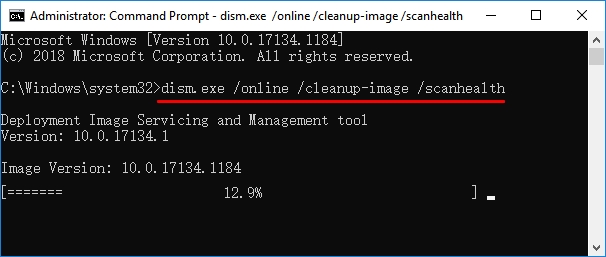
Wait for the operation to complete and you'll see the "The operation completed successfully" message.
Step 3. Type dism.exe /online /cleanup-image /restorehealth and press enter.
It will take some time to finish.
Solution 6. Create USB Recovery Drive in Another Way
The last but effective way that you can try is to create a Windows USB recovery drive in another way. It is to turn to a third-party bootable USB creation tool to solve the problem of Windows can't create a recovery drive.
EaseUS system backup software - EaseUS Todo Backup can help. It's a perfect alternative to replace Windows recovery drive that you can back up Windows OS and then restore the computer anytime from the bootable disk when your OS cannot boot up.
Secure Download
See how to run this intuitive software and flexibly create an OS backup plan for your computer and restore the OS any time now:
#1. Back Up Windows OS
Step 1. Launch EaseUS Todo Backup on your computer, and click Create Backup on the home screen and then hit the big question mark to select backup contents.

Step 2. To back up your Windows operating system, click "OS" to begin the backup task.

Step 3. Your Windows operating system information and all system related files and partitions will be automatically selected so you don't need to do any manual selection at this step. Next, you'll need to choose a location to save the system image backup by clicking the illustrated area.

Step 4. The backup location can be another local drive on your computer, an external hard drive, network, cloud or NAS. Generally, we recommend you use an external physical drive or cloud to preserve the system backup files.

Step 5. Customiztion settings like enabling an automatic backup schedule in daily, weekly, monthly, or upon an event, and making a differential and incremental backup are available in the Options button if you're interested. Click "Backup Now", and the Windows system backup process will begin. The completed backup task will display on the left side in a card style.
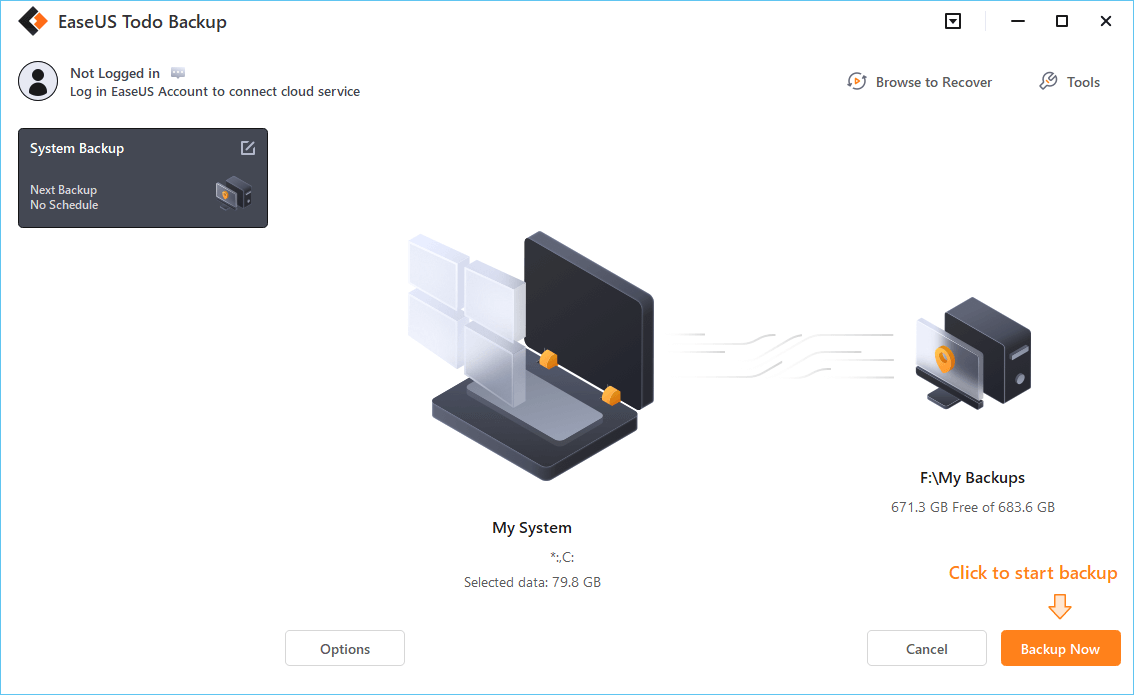
After creating the image backup of your OS, you can create a WinPE disk on your USB flash drive. If your computer can't create a recovery drive, you can try to boot your computer from the WinPE disk.
#2. Create USB Recovery Drive Alternative - Bootable Disk
Step 1. Prepare a USB drive which can be written and read.
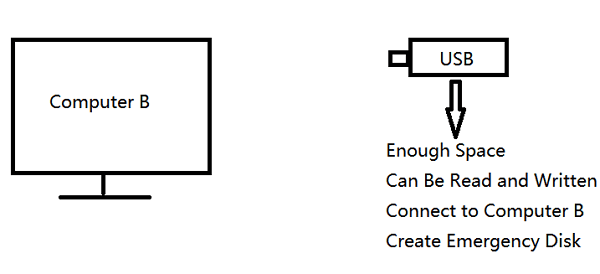
Step 2. Launch and install EaseUS Todo Backup on the Computer B.
Step 3. Find and click "Tools" and choose "Create Emergency Disk".
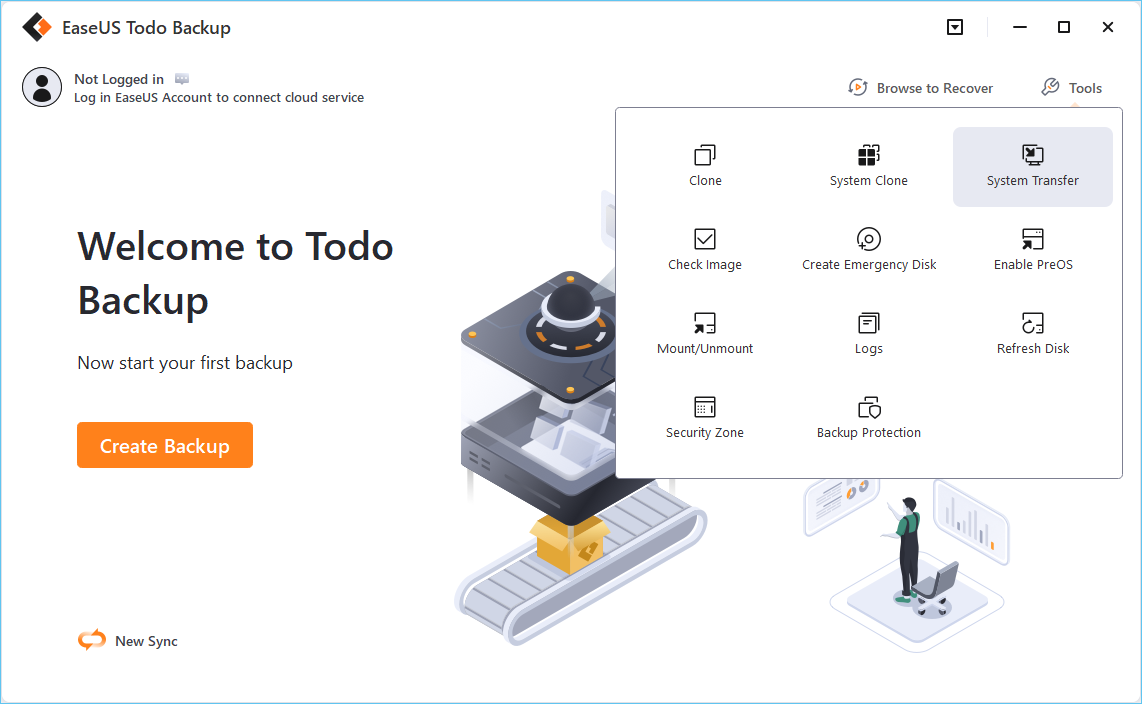
Step 4. Choose the Boot disk location. You can create an ISO file, a bootable USB or CD/DVD disc.
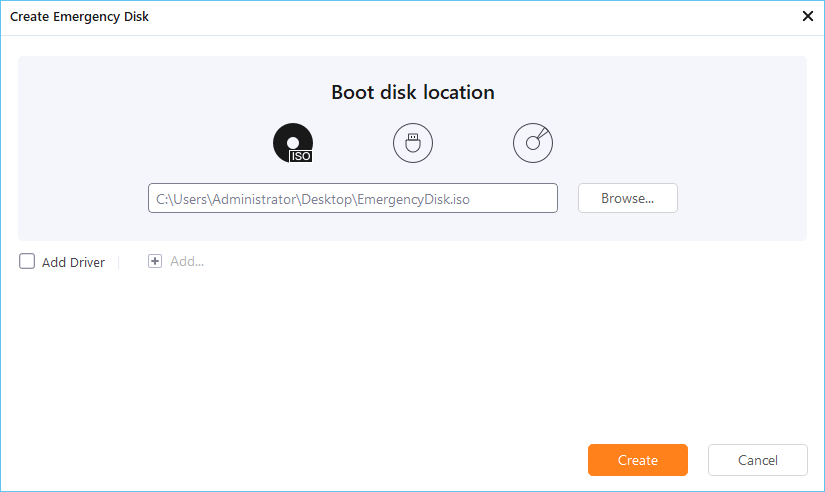
Step 5. Then click "Create" to start.
Do you have the following issues while using EaseUS Todo Backup for backup and recovery? Start a live chat with an EaseUS Expert to tailor a professional backup solution specific to your requirements.
- Unable to back up
- Backup process stuck
- Recovery failed
When you finish creating this USB bootable disk, you can always restore your computer to a healthy state.
Fixing "Can't Create a Recovery Drive" Is Possible, Take Action Now
On this page, we explained the main reasons that may prevent you from creating a Windows recovery drive. And don't worry if you get the "We can't create the recovery drive" error.
We've collected 5 manual solutions to fix this issue. And if none of them work, you still have the last option - turning to third-party system backup software - EaseUS Todo Backup for help.
Secure Download
It's efficient and reliable to rescue your system from sudden OS crashes or failure errors anytime.
FAQ on Windows 10 Can't Create Recovery Drive
How do I reset my computer when it says Cannot find recovery environment?
If your computer says it cannot find the recovery environment, you can restart it with the command prompt. To do this, press "Windows + R" on your keyboard and type "cmd". In the command prompt, type "C: \windows\system32\restore\rstrui.exe" and hit enter. This will open the System Restore Wizard. From here, you can choose a restore point and follow the instructions to reset your computer. If you don't have a restore point, you can try using the "Startup Repair" option in the Recovery environment.
Is it necessary to create a recovery drive in Windows 10?
Creating a recovery drive will give you a place to store your recovery image and files. This is helpful if you ever need to reinstall Windows 10.
Was This Page Helpful?
Updated by Larissa
Larissa has rich experience in writing technical articles and is now a professional editor at EaseUS. She is good at writing articles about data recovery, disk cloning, disk partitioning, data backup, and other related knowledge. Her detailed and ultimate guides help users find effective solutions to their problems. She is fond of traveling, reading, and riding in her spare time.
Jean is recognized as one of the most professional writers in EaseUS. She has kept improving her writing skills over the past 10 years and helped millions of her readers solve their tech problems on PC, Mac, and iOS devices.
Related Articles
-
2025 Best Cloud Backup for Synology NAS
![author icon]() Gap/Jul 22, 2025
Gap/Jul 22, 2025 -
Is Windows 10 Backup Any Good? Check the Answer
![author icon]() Jerry/Jul 22, 2025
Jerry/Jul 22, 2025 -
Types of Backup: Full vs. Incremental vs. Differential Explained [When & How-To Guide]
![author icon]() Tracy King/Jul 22, 2025
Tracy King/Jul 22, 2025 -
How to Efficiently Backup Hyper-V to Synology
![author icon]() Gap/Jul 22, 2025
Gap/Jul 22, 2025
